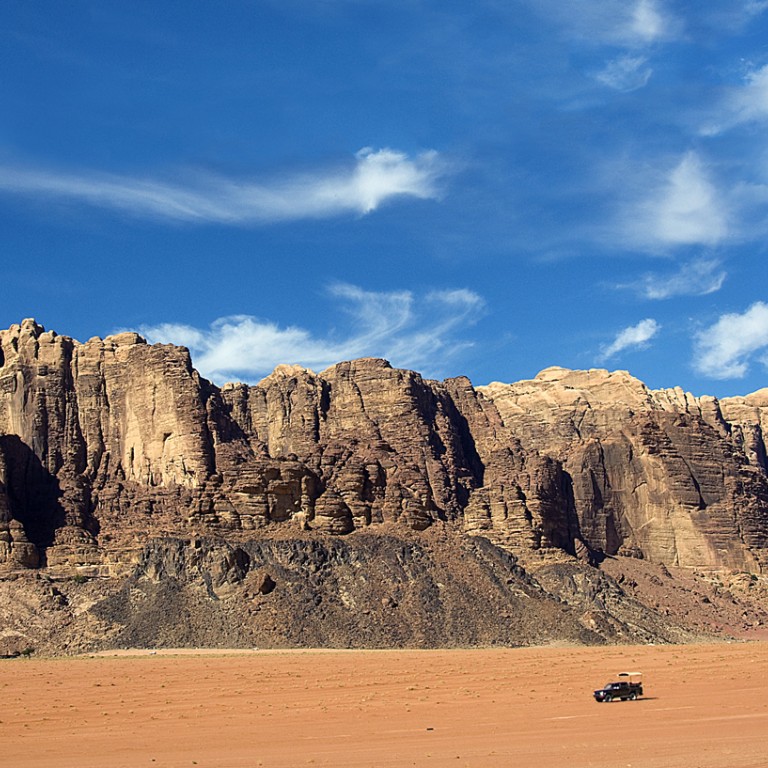
Arabian heights: a journey through the kingdom of Jordan
From Amman to Petra, a journey through the kingdom of Jordan is an experience to treasure. Words and pictures by Tim Pile
At first glance, Amman appears to have an inferiority complex – at least from a touristic perspective. All the postcards are of somewhere else.
Petra is well represented, as are the Red Sea, Wadi Rum, the ruins at Jerash and the Dead Sea. Given such illustrious competition, perhaps it’s not surprising that the capital of Jordan lures relatively few visitors.
Persevere though, and you’ll be amply rewarded.
Locals are helpful and hospitable in a “thanks for stopping by” kind of way. They’ll point you in the direction of the Roman Theatre and the ancient Citadel, a hilltop fortress that has seen its share of civilisations come and go during the past 7,000 years.

Back at street level there’s further evidence that Amman doesn’t really see itself as a holiday destination.
After being directed to a number of ad-hoc “my cousin has a car”-type travel agencies, I eventually stumble upon a rather drab government tourist office. The woman on duty speaks no English but smiles and nods at a poster of Petra.
Jordan is sometimes described as the Switzerland of the Middle East. The kingdom might lack alpine meadows and an enviably high standard of living but it remains a stable spot in a dangerous neighbourhood. Despite the apparent orderliness, however, foreign embassies warn tourists to avoid mosques after Friday morning prayers, when political demonstrations may take place.
It’s Friday, so, purely for research purposes, I head along to the al-Husseini Mosque, just as the faithful are streaming cafewards. I’m invited to pull up a chair and, over mint tea, learn that King Abdullah is held in high regard; which is apparently more than can be said for the national football team.
As we munch spicy falafel and hummus sandwiches, my acquaintances explain that their pragmatic monarch is responsible for Jordan avoiding the political upheaval that has swept the region. That could also have something to do with the tolerance of his subjects, though.
Jordan takes in more refugees per head of population than any other country. Millions of Syrians, Iraqis and Palestinians fleeing war and persecution have been offered a safe haven and the opportunity to rebuild scarred lives.
By contrast, Jordanians show less goodwill towards their fellow man when they get behind the wheel. The kingdom has one of the world’s highest road fatality rates, so I cancel the hire car and hop on a longdistance bus instead.

The expanse of desert is so inhospitable that, for centuries, only the hardiest of nomadic Bedouins were able to survive in the harsh environment. Times have changed, though, according to a man who greets me at the visitor centre.
“These days we Bedouins have smartphones, fourwheel drives and live in townhouses while you foreigners ride camels and sleep on the floor in tents,” he says, with a grin.
Ahmed runs a tourist camp. He also has three wives, although he’s about to divorce one and marry again. I’m curious to discover how his soon-to-be jettisoned spouse will fare in Bedouin society but play safe by changing the subject to a local hero, Lawrence of Arabia.
The charismatic British officer famously led an Arab revolt against the Ottoman Empire from Wadi Rum during the first world war. His description of the otherworldly desert formations and empty landscape as “vast, echoing and God-like” is as accurate today as it was nearly a century ago.
Ahmed makes me a low-season lodging offer I can’t refuse and we set off for his camp, which is inside a protected area towards the border with Saudi Arabia.
He explains that what he gains in prestige from a location within a Unesco World Heritage site, he loses by not having electricity, running water or a sealed road.
My delight is complete when I realise there’s no phone signal either.
I explore my surreal surroundings as the sun dips lower, staining the craggy sandstone cliffs a ruddy scarlet. Ahmed assures me he’ll return in the morning with breakfast but, until then, I’m on my own with only the lisping wind and ghosts of bygone military campaigns for company. I sleep like a sand dune.
From Wadi Rum it’s a two-hour drive to the agreeable seaside town of Aqaba. Shisha cafes congregate at the water’s edge and a flotilla of glass-bottomed boats provide glimpses of Red Sea marine life without the need to undress. Ironically, given how much sand there is in Jordan, the beach is gritty and unimpressive. But at least it’s free.
The entrance fee at Petra is an eye-watering 50 dinars (HK$550). Until recently, enterprising Bedouins sneaked sightseers in via secret paths for a small donation.

Voted one of the New Seven Wonders of the World in 2007, Petra’s fairy-tale features were carved into the cliffs by Nabatean camel-herders more than 2,000 years ago.
The imposing facades, royal tombs and broad Roman streets are pockmarked with caves, some inhabited.
The “rose-red city” was once a busy trading centre and, although modern-day merchants complain that business is poor as a result of the “Syrian situation”, there are plenty of Italian cruise-ship passengers and tour groups on side trips from Israel to latch onto.
To beat the crowds, a predawn start is essential. For almost an hour I have the entire archaeological site to myself. The trinket sellers are still asleep – as is the man in the ticket office.
Slanting beams of sunlight guide me through the chasms and canyons until I’m face to face with the amber-hued facade of the Treasury; familiar to millions from Hollywood blockbuster Indiana Jones and the Last Crusade. As I click away, a Bedouin teenager approaches with an intriguing offer.
“Come and stay in my family cave. Only 10 dinars per night. It’s like the Flintstones with Wi-fi.”
